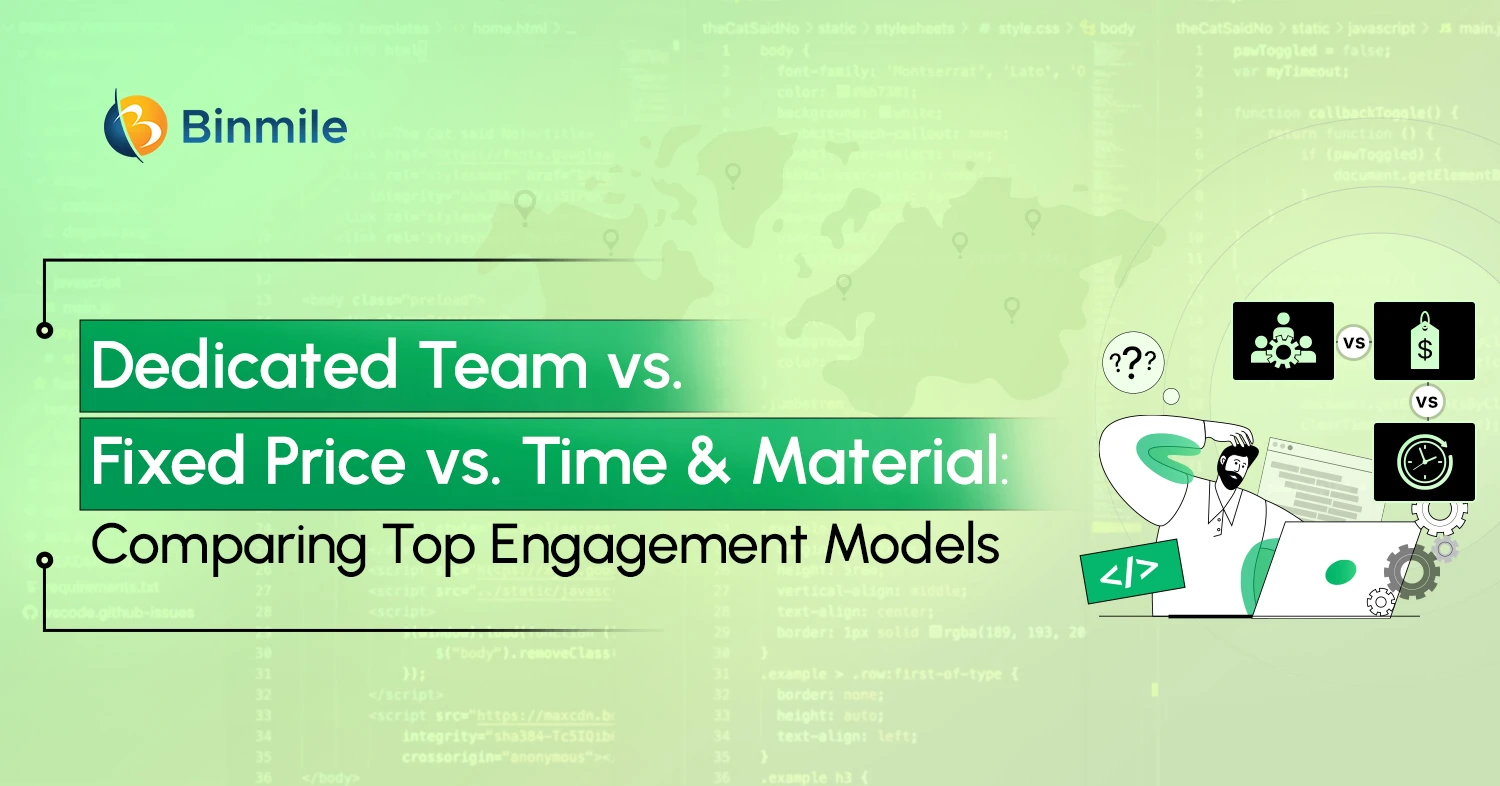As business organizations rapidly adopt open-source container-orchestration systems, serverless technologies, and other cloud-based solutions, the need for robust cloud-native security becomes critical. Additionally, to address this concern, a software development company requires new tools and processes to ensure security is ingrained at every stage of the software development life cycle (SDLC). Moreover, this is where the broad adoption of DevSecOps comes into play.
DevSecOps is an agile coding methodology that emphasizes the early implementation of security in software development. In this blog, we will explore the growing significance of DevSecOps and why security is no longer an afterthought in DevOps pipelines.
The Growing Importance of DevSecOps
According to a market research report by Verified Market Research, the DevSecOps Market was valued at USD 2.18 billion in 2019. Additionally, it is projected to reach USD 17.16 billion by 2027, with a compound annual growth rate (CAGR) of 30.76% from 2020 to 2027.

Recently, the U.S. Navy introduced Black Pearl, a new software development tool aimed at implementing DevSecOps practices. This tool focuses on incorporating security early in the development process. Notably, Navy CIO Aaron Weis emphasized the significance of DevSecOps, highlighting its crucial role in accelerating capability and improving information security in modern software development and delivery.
Industry experts also acknowledge the growing importance of security in DevOps pipelines. Eldad Assis, a DevOps Architect at JFrog, a California-based software company, predicts a “security shift left” approach. This approach integrates security measures from the developer’s IDE to dependency and static code analysis stages. Consequently, software components are released only after addressing security issues automatically.
DevSecOps Model Makes Security Everyone’s Responsibility

DevSecOps operates under the principle that security is a shared responsibility. It requires companies to foster a collective effort to minimize security risks across engineering and security teams. The main objective of DevSecOps is to integrate security controls and principles within the DevOps cycle, adopting a Security as Code approach.
The implementation of DevSecOps influences security in the following ways:
- Integration of security controls throughout the entire software lifecycle at an early stage.
- Embracing a “shift left” approach that enhances security and reduces operational overhead.
- Involving both DevOps end-users and development engineers as active participants in security.
DevOps Security Pain Points
While DevOps combines software development and IT operations, there are challenges that can make security vulnerable to unwanted attacks. These challenges include:
- Difficulty for security teams to keep pace with the speed of DevOps.
- Neglect of security by DevOps teams.
- Potential risks associated with certain tools used in DevOps environments.
- Insufficient controls that create openings for attacks.
DevSecOps ensures better alignment between engineering and security teams. To address these challenges, companies need to integrate DevSecOps principles into their tools and processes. The expected benefits of this integration include:
- Reduced time spent on configuring security consoles.
- Developers perceive security as an enabler rather than an obstacle.
- Early identification of vulnerabilities.
- Increased agility and speed for security teams.
- Improved observability and traceability.
- Reduced risk of errors and mismanagement.
Addressing DevSecOps Implementation Challenges
#1 Choosing the Right DevSecOps Tools
To successfully adopt DevSecOps, organizations must choose the appropriate tools. Consider options such as ThreatModeler, Contrast Security, Continuum Security, Elastalert, Kibana, and Grafana. These tools can be integrated into the DevOps pipeline, ensuring security throughout the entire software development journey.
#2 Analyzing Code and Conducting Vulnerability Assessments
Performing code analysis and vulnerability assessments is crucial in the DevSecOps practice. By thoroughly analyzing the codebase, potential security risks can be identified early on. Conducting vulnerability assessments helps ensure that vulnerabilities are addressed before deployment.
#3 Automating the Process
Automation plays a vital role in DevSecOps. By automating security measures, organizations can streamline the integration of security controls into the development process. Automating tasks such as code scanning and security testing reduces human error and saves time, making the entire process more efficient.
#4 Evaluating Existing Security Measures
Assessing the effectiveness of current security measures is essential. By evaluating existing controls and practices, organizations can identify areas of improvement and enhance their security posture. Also, this evaluation helps ensure that the adopted DevSecOps practices align with the organization’s security objectives.
#5 Overcoming Challenges
Moreover, DevSecOps adoption can face various challenges, including the traditional separation between security and development teams. To overcome these obstacles, organizations must foster collaboration and encourage communication between these teams. Additionally, breaking down silos and promoting a shared responsibility for security will drive successful DevSecOps implementation.
#6 Making Security Mandatory at Every Stage
Integrating security at every stage of the software development lifecycle (SDLC) is imperative. On top of that, by making security a mandatory aspect right from the beginning, organizations actively ensure that potential vulnerabilities are identified and addressed early on. Consequently, this proactive approach significantly reduces security risks, thereby enhancing the overall robustness of the software.
#7 Monitoring Continuous Integration and Continuous Delivery
Continuous integration and continuous delivery (CI/CD) pipelines require constant monitoring to maintain security standards. Equally, by actively monitoring the CI/CD pipeline, organizations can identify and address security issues promptly. Likewise, real-time monitoring enables quick detection of threats and vulnerabilities.
#8 Training the Team to Code Securely
Educating the development team on secure coding practices is vital for successful DevSecOps adoption. Moreover, providing training and resources on secure coding techniques helps developers understand the importance of writing secure code. Additionally, this training empowers them to actively contribute to the overall security of the software throughout the SDLC.
#9 Assessing the Success of DevSecOps Adoption
To determine the success of DevSecOps adoption, organizations should consider various factors. These factors include lead time, test coverage, deployment frequency, detection of threats, identification of security defects and flaws, meantime to repair and recover, among others. Besides, by evaluating these metrics, organizations can effectively assess the effectiveness of the adopted security practices.
Summing Up
We must not underestimate the importance of security in DevOps pipelines. Moreover, by embracing DevSecOps as an integral part of DevOps, organizations can effectively address security challenges throughout the entire software development lifecycle. Additionally, through the automation of security practices, businesses can safeguard their IT environment, data, and CI/CD pipeline. As the investment in DevSecOps continues to rise, it becomes crucial for companies to proactively adopt new technologies. Seeking assistance from the professional cloud and DevOps consulting companies can further enhance security benefits in their software development processes.
Furthermore, with Binmile’s DevOps consulting services, you can build high-quality products faster, while avoiding costly resource deployment. Our comprehensive approach includes rigorous security audits and end-to-end support, ensuring a secure software infrastructure within your IT environment. This enables organizations to achieve greater efficiency in both development and operations. Don’t hesitate to reach out to us for all your project needs.
Frequently Asked Questions
Secure DevOps, also known as DevSecOps, is the practice of integrating security throughout the DevOps lifecycle. It ensures that security is built into every stage—from development to deployment—by automating security checks, code analysis, vulnerability scanning, and compliance monitoring. This approach reduces risks, accelerates delivery, and promotes a security-first culture in software development.
DevOps security software includes tools designed to integrate security into the DevOps pipeline. These tools help automate security testing, monitor vulnerabilities, enforce compliance, and protect code, infrastructure, and deployments. They ensure secure development without slowing down delivery speed.









